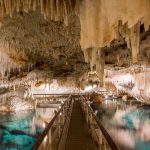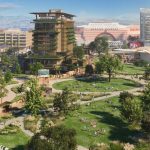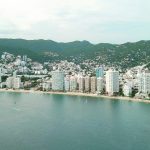Jalisco tourism minister highlights state's authenticity
The tourism minister for the Mexican state of Jalisco says it’s unrivalled when it comes to offering visitors a particularly Mexican vacation.
Michelle Fridman says her jurisdiction has tourism attributes that are not only clearly synonymous with her homeland, but instantly recognized internationally as well.
“Jalisco offers the most representative experience of Mexico,” she says. “We like to say it is the most Mexican destination of all. With our 12 Pueblos Mágicos (communities recognized for outstanding tourism attributes), routes such as Tequila and Raicilla, and as the birthplace of tequila, mariachi and charrería — so characteristic of Mexico — and home to some of the country’s most beautiful beaches, Jalisco is the best place to live Mexico’s iconic culture. It is a perfect blend of tradition, culture, natural beauty and adventure, making it one of Mexico’s top destinations. Jalisco also stands out as one of Latin America’s most inclusive destinations for LGBTQ+ tourism, especially in Guadalajara, thanks to its infrastructure, events and public policies. In addition, it has innovated the digital tourism experience through mobile apps and augmented reality at emblematic sites such as the paintings of the Museo Cabañas, enriching visits and attracting a young, connected audience.”
Visitors can visit distilleries that will familiarize them with both tequila and raicilla, both types of alcohol derived from the agave plant, grown throughout Jalisco.
Much of Jalisco’s appeal revolves around the interior of the interior city of Guadalajara, seaside Puerto Vallarta and the Costalegre, and the Pueblos Mágicos. Guadalajara, Mexico’s second-largest city, offers a mix of: historic landmarks; cultural, artistic and traditional experiences; a cutting-edge contemporary art scene; a rich culinary tradition alongside internationally recognized restaurants and bars; and one of Latin America’s most inclusive environments for residents and visitors alike.
“Puerto Vallarta, located on Banderas Bay, is a coastal destination where beautiful beaches meet the impressive Sierra Madre,” Fridman continues. “Its walkable downtown features a dining scene that ranges from street food to fine-dining tasting menus; vibrant nightlife; and charming cobblestone streets in Old Town and the Romantic Zone. There is a wide variety of ways to enjoy nature: canopy tours, deep-sea fishing and walks through the lush Puerto Vallarta Botanical Garden. About 30 minutes south of Puerto Vallarta by boat, the communities of Cabo Corrientes offer an off-the-beaten-path beach experience with boutique accommodations ideal for travelers seeking laid-back luxury by the sea.
“Many Canadians prefer the coast, especially Puerto Vallarta for its beaches, although some also explore inland to experience Guadalajara’s rich culture,” Fridman says. “Another very popular area for Canadian snowbirds and temporary residents is Chapala, 1 hour and 20 minutes south of Guadalajara. The foreign resident population – mainly Canadian and American – is estimated at 30,000 people. Mild temperatures and low humidity year-round are the main draws. Visitors often settle in Chapala and Ajijic, the latter one of Jalisco’s 12 Pueblos Mágicos. In Mazamitla, for instance, tourism represents up to 30 % of the local economy during high seasons, boosting small businesses and job creation. Similarly, destinations such as Tapalpa and San Sebastián del Oeste have been strengthened through rural and community-based tourism. Meanwhile, Ajijic and San Juan de los Lagos continue to attract long-stay visitors thanks to their charm, accessibility and pleasant climate.”
Costalegre, a coastal region south of Puerto Vallarta, is known for secluded beaches, lush landscapes and sustainably developed luxury resorts.
“Costalegre is the state’s best-kept secret,” Fridman states. “This coastal region will see major development over the next 10 years, consolidating itself as a top-tier beach destination.
“The opening of Four Seasons Tamarindo in 2024 put the region on the map among U.S. luxury travelers, and projects such as Six Senses Xala continue to draw interest,” Fridman adds. “Other noted properties include Careyes, Cuixmala, Las Rosadas and Las Alamandas.”
The UNESCO-recognized Tequila Route and cultural festivals such as the Encuentro Internacional del Mariachi y la Charrería will participate in the MexBest 2025 event, which recognizes the best of Mexico’s gastronomy and hospitality. In addition to these destinations, visitors can also explore cultural and natural experiences inland, such as the Pueblos Mágicos of Tequila, Tapalpa, Mazamitla or San Sebastián del Oeste, among others, known for their rural tourism, forest landscapes and living traditions.
“Another distinctive product is the Raicilla Route, which lets visitors discover this artisanal spirit through tours of traditional tabernas in municipalities such as Mascota, Cabo Corrientes and San Sebastián del Oeste, offering an authentic experience that blends landscape, culture and sustainability.”
Last year saw Jalisco record a total passenger movement of 24.7 million people, of which 12.2 million were passengers arriving by both domestic and international air travel. From January to May of this year, Jalisco received 5.3 million arriving passengers, a 5 % increase over the same period in 2024.
Jalisco will host major global events in the coming years, such as the Ariel Awards 2025 in Puerto Vallarta — Jalisco’s third consecutive year of having the event,;the first edition of ITB Américas in 2026; and the Spirits Selection by Concours Mondial de Bruxelles that same year. The economic impact of tourism has been significant: in 2024 more than 21,000 jobs were created and the state closed the year with more than 152,000 formal jobs in the sector.
Tourism authorities report that Jalisco promotes a responsible, low-impact tourism approach in protected natural areas such as the Sierra de Manantlán, Sierra El Cuale and the Chamela–Cuixmala Biosphere Reserve, working hand in hand with local communities and environmental organizations.
Tourism leaders from Jalisco and bordering Nayarit capitalize on being next door, collaborating on multiple joint-promotion campaigns. The annual Riviera Nayarit–Puerto Vallarta Gala is one of Mexico’s longest-running tourism exchange events, bringing together local tourism representatives with industry leaders from North America. March marked its 30th edition, with more than 90 wholesale agencies, 60 hosted buyers and 115 hotels participating.
Fridman says Jalisco has excellent air connectivity with Canada, thanks to numerous direct flights and new routes in the pipeline. Air Canada will launch a direct Toronto–Guadalajara route with three weekly flights starting in November, while Air Transat will fly Montreal–Guadalajara twice weekly starting in December. Flair Airlines will increase its Vancouver–Guadalajara route to five weekly flights in December, while Air Canada will raise its Vancouver–Puerto Vallarta service to seven weekly flights in high season.
Jalisco now has over 775,000 annual seats from Canada, with a 9% increase in air operations compared to the same period in 2024.
“In the first half of 2025 alone, the state welcomed more than 258,000 Canadian visitors, a 5 % increase,” Fridman reports. “Jalisco maintains direct flights to 17 Canadian cities, mostly from Puerto Vallarta, although Guadalajara also connects with Toronto and Vancouver. Ground connectivity has also improved with the inauguration of the Guadalajara–Puerto Vallarta highway, which streamlines travel between the state’s interior and the coast.”

















